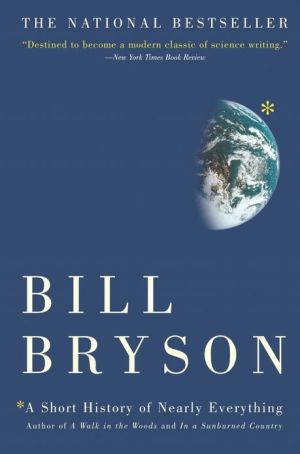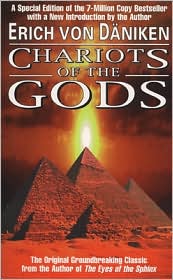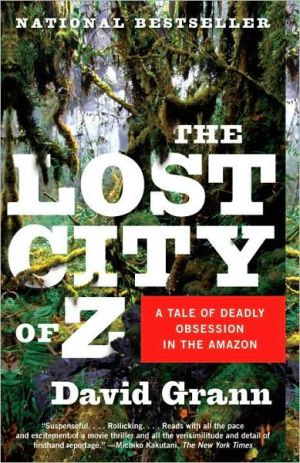Man and Microbes: Disease and Plagues in History and Modern Times
AIDS, Lyme disease, and the deadly hantavirus are just a few of the dozens of new diseases to arrive in recent years. Old ones such as TB and cholera have returned with sharper virulence. Where do new diseases come from? Why are old ones back as vicious changelings? Why now? We created this epidemic of epidemics by transforming our environment and behavior - our landscape, technology, and sex lives. Thus we hasten microbes' evolution and our own, making the world a global village for...
Search in google:
AIDS, Lyme disease, and the deadly hantavirus are just a few of the dozens of new diseases to arrive in recent years. Old ones such as TB and cholera have returned with sharper virulence. Where do new diseases come from? Why are old ones back as vicious changelings? Why now? We created this epidemic of epidemics by transforming our environment and behavior - our landscape, technology, and sex lives. Thus we hasten microbes' evolution and our own, making the world a global village for diseases. In Man and Microbes, respected science writer Arno Karlen presents a dramatic panorama of the natural history of disease. Drawing on case studies and tales of medical detection, he uncovers the ills of ancient hunter-gatherers, relates the rise of diseases that came with each domesticated species, and exposes the origins of modern urban epidemics. Citing original sources and extensive research, Karlen recounts the terror of measles and smallpox that raked the ancient empires of Rome and China; the intertwined stories of leprosy and tuberculosis throughout thousands of years of history; the onslaught of European microbes that devastated the peoples of the Americas far more than did the firearms of their conquerors; and the much-forgotten influenza pandemic of 1918 that killed tens of millions. He also analyzes the most recent medical reports of mysterious new diseases from around the world and provides a view of how they have arisen and what they bode for the future. Man and Microbes makes clear that infection is a natural and necessary part of life. It shows how the search for food, shelter, and a safer, more prosperous life has altered the environment, changed the dance of adaptation between humans and microbes, and generated new diseases. The means to surmount the growing public health crisis in our ever-accelerating global society lie in the same ingenuity that created it. Understanding the complex and vital relationships between man and microbe can help us tame or mak Publishers Weekly Karlen (Napoleon's Glands) has produced a disturbing, succinct, compelling report on the current global crisis of new and resurgent diseases. Covering cholera, leprosy, cancer, AIDS, viral encephalitis, lethal Ebola fever, streptococcal ``flesh-eating'' infections and a host of other killers, he shows how the present wave of diseases arose with drastic environmental change, wars, acceleration of travel, the breakdown of public health measures, and microbial adaptation. In the book's first half, he entertainingly charts humanity's relationship with microbes, from the earliest hominids' probable encounters with bubonic plague to hunter-gatherers' comparative good health, the explosion of sickness in Bronze Age cities and the spread of infections with trade, conquest and empire. Karlen concludes that today's epidemics are part of an ancient pattern-whenever people make radical changes in their lifestyle and environment, disease flourishes. He suggests that improved surveillance could help defuse the crisis we face now. (Apr.)
\ Publishers Weekly\ - Publisher's Weekly\ Karlen (Napoleon's Glands) has produced a disturbing, succinct, compelling report on the current global crisis of new and resurgent diseases. Covering cholera, leprosy, cancer, AIDS, viral encephalitis, lethal Ebola fever, streptococcal ``flesh-eating'' infections and a host of other killers, he shows how the present wave of diseases arose with drastic environmental change, wars, acceleration of travel, the breakdown of public health measures, and microbial adaptation. In the book's first half, he entertainingly charts humanity's relationship with microbes, from the earliest hominids' probable encounters with bubonic plague to hunter-gatherers' comparative good health, the explosion of sickness in Bronze Age cities and the spread of infections with trade, conquest and empire. Karlen concludes that today's epidemics are part of an ancient pattern-whenever people make radical changes in their lifestyle and environment, disease flourishes. He suggests that improved surveillance could help defuse the crisis we face now. (Apr.)\ \ \ \ \ Library JournalKarlen, author of Napoleon's Glands and Other Adventures in Biohistory (LJ 8/84), focuses his attention on infectious diseases throughout history, from ancient hunter- gatherers through some of the latest headline news. Karlen provides us with both a "prequel" to Laurie Garrett's The Coming Plague (LJ 9/15/94) as well as a valuable update of William H. McNeil's classic Plagues and Peoples (LJ 9/15/76). Outbreaks of new diseases, including terrifying hemorrhagic fevers lilke Ebola and Marburg viruses, and resurgent drug-resistant strains of historic killers such as tuberculosis and malaria have confounded post-World War II complacency about the end of epidemics. As Karlen points out, changes in the physical environment, technology, and lifestyle provide new opportunities for viruses and bacteria to exploit. Diseases are an inescapable part of the earth's ecology, as tenacious and adaptable as the human hosts they threaten. A fascinating and cautionary tale, Man and Microbes is recommended for most libraries.-Kathy Arsenault, Univ. of South Florida-St. Petersburg Lib.\ \ \ School Library JournalYA-A very readable history of communicable diseases. Karlen thinks that, because Americans have been living in a dream world regarding the possibilities of wide-spread illness, our public health will almost inevitably be severely tested. The chapter on AIDS and other STDs, their mutations, increases, and increasing frequency alone gives one pause. For a book in which plagues and epidemics are featured in chronological order, the author does an excellent job of breaking up the recitation by placing them in the context of their times; for instance, the plague of Justinian, which began in the 6th century and lasted over 200 years (cutting the population of Europe in half), opened the way for invasions, virtually ended city life, and led to a long period of recuperation known as the Dark Ages. Only very recently have epidemics and pandemics ceased to be major players in the historical movements of the world's great civilizations. Karlen's explanation of their important role in history adds breadth to readers' knowledge of the past. An excellent research source.-Judy McAloon, Potomac Library, Prince William Public Library System VA\ \ \ \ \ BooknewsScience writer Arno Karlen draws on case studies and tales of medical sleuthing to uncover the ills of ancient hunter-gatherers, relate the rise of diseases that came with each domesticated species, and expose the origins of modern urban epidemics. Annotation c. Book News, Inc., Portland, OR (booknews.com)\ \








